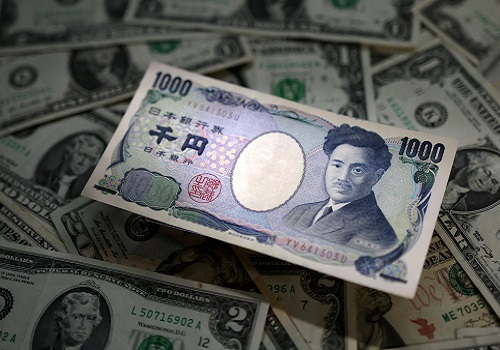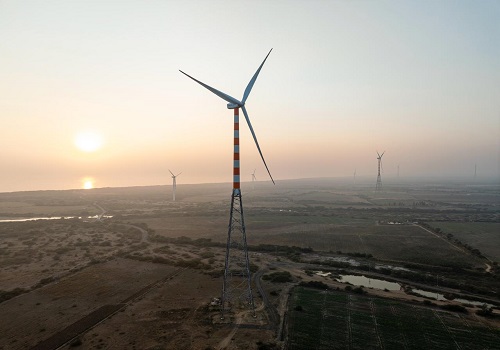Jeera trading range for the day is 23020-24720 - Kedia Advisory

Gold
Gold prices declined by 1.07% to Rs.77,136, pressured by the anticipation of a slower pace of Federal Reserve rate cuts in 2025. The U.S. job market continues to cool in line with expectations, and producer price inflation supports the likelihood of a Fed rate cut on December 18. However, market participants predict March 2025 as a more probable date for the next reduction, with only a 24% chance of a January cut, according to CME’s FedWatch tool. Fed officials, like San Francisco President Mary Daly, have advocated caution in the pace of future rate reductions. Gold demand remains subdued in key markets. In India, wedding-season demand has been impacted by rising domestic prices, leading to discounts widening to $9 an ounce from $2 last week. In China, traders offered discounts of $19.4-$25 per ounce amid low consumer confidence, while premiums in Singapore and Hong Kong remained marginal at $1.50-$2.00. Central banks, however, showed robust demand, with 60 tons of net gold purchases in October, the highest in 2024. India added 27 tons, leading with 77 tons of year-to-date purchases, a five-fold increase from 2023. Global gold demand in Q3 2024 was stable at 1,176.5 metric tons year-on-year, supported by strong investment activity. Gold is undergoing long liquidation, with open interest dropping by 9.43% to 13,060. Support is at Rs.76,750, with further downside possible to Rs.76,365. Resistance is at Rs.77,820, and a move above this could test Rs.78,505.
Trading Ideas:
* Gold trading range for the day is 76365-78505.
* Gold dropped as investors priced in the possibility of the Federal Reserve cutting rates more slowly next year.
* U.S. data showed the job market is gradually cooling in line with expectations
* Fed’s Daly said that she was comfortable cutting rates in December, but advocated "a more thoughtful and cautious approach" on further reductions.
Silver
Silver prices fell by 1.76% to Rs.91,001, extending a pullback due to uncertainty over the Federal Reserve's future rate cuts and higher-than-expected US factory gate costs. The November Producer Price Index (PPI) rose 0.4%, double the expected 0.2%, reflecting lingering inflationary pressures. However, core PPI eased to 0.2% from 0.3% in October. Weekly US jobless claims unexpectedly increased to 242,000, adding mixed signals to the market. In Europe, the ECB cut rates by 0.25% to 3%, revealing a divergence in monetary policy between the Fed and other major central banks, which supported the US Dollar and pressured silver prices. The Silver Institute forecasts a 4% decline in the global silver deficit to 182 million ounces in 2024, with supply growth of 2% slightly outpacing a 1% rise in demand. Industrial applications, including electronics, electric vehicles, and solar panels, will drive demand to a record 1.21 billion ounces, offsetting a 16% decline in physical investment. Mine output is projected to rise by 1% with higher production in Mexico, Chile, and the US, while recycling is expected to increase by 5% due to higher western silverware scrap. India's silver imports have surged to 4,554 tons in H1 2024, almost tenfold from 560 tons a year ago, driven by solar panel demand and investor interest in better returns compared to gold. The market saw fresh selling with a 14.7% rise in open interest to 27,647 as prices dropped by Rs.1,632. Support is at ?90,170, with further downside to Rs.89,335. Resistance is seen at Rs.92,090, with potential to test Rs.93,175.
Trading Ideas:
* Silver trading range for the day is 89335-93175.
* Silver dropped extending pullback amid uncertainty over the magnitude of Fed rate cuts next year.
* US Jobless Claims increased by 242K against expectations of a slight decline to 220K from the previous week’s 225K.
* US Producer prices were mixed, with the headline PPI accelerating at a 0.4% pace, twice as much as the 0.2% expected, from 0.3% in October.
Crude oil
Crude oil prices rose by 1.07% to Rs.6,042, driven by fresh supply concerns due to additional sanctions on Russia and hopes of rising Chinese demand following recent stimulus measures. China, the world’s second-largest oil consumer, is expected to maintain elevated crude imports into 2025, with refiners capitalizing on competitive Saudi Arabian supply and utilizing quotas. The International Energy Agency (IEA) raised its 2025 global oil demand growth forecast to 1.1 million barrels per day (bpd), supported by China’s stimulus, but warned of a surplus next year due to increased non-OPEC+ supply from countries like the US, Brazil, and Guyana. US crude inventories fell by 1.425 million barrels last week, exceeding the expected 1.1 million-barrel decline, while Cushing stocks dropped by 1.298 million barrels. However, gasoline inventories surged by 5.086 million barrels against expectations of 1.9 million, and distillate stocks rose by 3.235 million barrels, highlighting mixed market fundamentals. Meanwhile, net US crude imports fell by 170,000 bpd. The EIA projects global oil demand growth of 1.2 million bpd in 2025, revised down by 300,000 bpd, reflecting weaker economic activity in China and North America. US oil production is also set to hit smaller records, with output revised down to 13.22 million bpd for 2024. The crude oil market saw fresh buying, with a significant 24.82% increase in open interest to 8,520, as prices rose by Rs.64. Support is at Rs.5,971, with a potential test at Rs.5,901. Resistance is seen at Rs.6,080, and a move above could target Rs.6,119.
Trading Ideas:
* Crudeoil trading range for the day is 5901-6119.
* Crude oil gains as additional sanctions on Russia ratcheted up supply worries.
* China stimulus expected to support demand
* IEA forecasts a supply surplus in 2025
Natural Gas
Natural gas prices declined sharply by 6.81% to settle at Rs.279.2 due to increased supplies as production ramps up in anticipation of higher demand during the winter season and growing flows to liquefied natural gas (LNG) export facilities. The gas flow to LNG export plants reached an 11-month high in December, driven by Venture Global LNG’s Plaquemines plant in Louisiana starting to pull in sufficient fuel for its first LNG production. Meanwhile, gas output in the Lower 48 U.S. states rose to 102.9 billion cubic feet per day (bcfd) in December, up from 101.5 bcfd in November, according to LSEG. Weather forecasts predict mostly warmer-than-normal temperatures through December 28, except for a brief colder-than-normal period from December 21-23. This has led to projections of lower average gas demand next week at 125.0 bcfd, down from 129.4 bcfd this week. However, demand is expected to climb to 136.4 bcfd in two weeks. The U.S. Energy Information Administration (EIA) noted that natural gas inventories remain robust, with storage levels 6% above the five-year average at 3.922 trillion cubic feet as of the end of the injection season. Despite a higher-than-expected withdrawal of 190 billion cubic feet last week, inventories are 1.8% higher than last year and 4.6% above the five-year average. The market experienced long liquidation with a 27.02% drop in open interest to 14,670 as prices fell by Rs.20.4. Support is at Rs.271.9, with a potential test of Rs.264.6 below that. Resistance is seen at Rs.292.1, and a move above could target Rs.305.
Trading Ideas:
* Naturalgas trading range for the day is 264.6-305.
* Natural gas fell on increased supplies as producers keep pulling more gas out of the ground
* Gas flows to Venture Global Plaquemines in Louisiana high enough to produce first LNG
* Feedgas to LNG export plants on track to reach 11-month high
Copper
Copper prices fell by 0.97% to close at Rs.814.7, driven by persistent concerns over subdued manufacturing demand in China. Credit aggregates in November fell below expectations, reflecting limited impact from the People’s Bank of China's aggressive monetary easing. Weak copper production figures from Peru added to the bearish sentiment, as October's output dropped by 1.4% year-on-year due to reduced activity at major mines like Cerro Verde and Antamina. Meanwhile, global refined copper markets are bracing for a surplus of 491,000 tons in 2025, the largest in five years, prompting BNP Paribas to lower its 2025 copper price forecast by 5% to $9,020. On the positive side, Chinese manufacturing activity expanded in November, and copper imports hit a one-year high of 528,000 tons, up 4.3% from October. This was partly due to lower copper prices and declining domestic inventories. However, imports of copper concentrate fell by 7.8% in November year-on-year, though total imports for the first 11 months increased by 2.2% annually. Despite this, refined copper saw a deficit of 131,000 tons in September, contrasting with a surplus of 43,000 tons in August, as global refined copper consumption (2.35 million metric tons) outpaced production (2.22 million metric tons). The market witnessed fresh selling, with open interest rising by 0.2% to 5,567 as prices dropped by Rs.7.95. Copper now has support at Rs.811, and a break below this could test Rs.807.1 levels. Resistance is likely at Rs.820.9, with a potential move up to Rs.826.9.
Trading Ideas:
* Copper trading range for the day is 807.1-826.9.
* Copper fell amid more pessimism on the outlook of manufacturing demand in China.
* Copper output in Peru down 1.4% in October
* Shanghai warehouse copper stocks down 13.5%
Zinc
Zinc prices closed 0.09% higher at Rs.287.6, supported by a modest recovery in China's smelter production and falling domestic inventories. Shanghai Futures Exchange zinc inventories dropped by 4.4% last week, indicating robust demand. However, China's macroeconomic uncertainties, slower-than-expected export growth, and persistent construction sector concerns weighed on the market. The Chinese government pledged increased fiscal stimulus and monetary policy adjustments to sustain economic growth amidst ongoing trade tensions with the United States. Zinc production in China is recovering, with December’s domestic refined zinc output expected to rise by over 20,000 metric tons month-on-month, a 5% increase. Despite this recovery, cumulative zinc production for 2024 is projected to decline by over 6% year-on-year. Meanwhile, global zinc market dynamics show a narrowing deficit, with the International Lead and Zinc Study Group (ILZSG) reporting a deficit of 79,500 metric tons in September, down from 85,000 tons in August. For the first nine months of 2024, the global market recorded a deficit of 8,000 tons compared to a surplus of 358,000 tons in the same period last year. Zinc prices experienced short covering, as evidenced by an 11.03% decline in open interest to 2,508 while prices rose marginally by Rs.0.25. Zinc has support at Rs.285.8, and a break below this level could test Rs.284. Resistance is now seen at Rs.289.6, with a potential move toward Rs.291.6 if bullish momentum persists.
Trading Ideas:
* Zinc trading range for the day is 284-291.6.
* Zinc prices remained in range amid a stronger U.S. dollar and lack of clarity around China's stimulus measures.
* China pledged to increase the budget deficit, issue more debt and loosen monetary policy to maintain a stable economic growth rate.
* Zinc inventories in warehouses monitored by the Shanghai Futures Exchange fell 4.4% from last Friday
Aluminium
Aluminium prices edged up by 0.33% to close at Rs.244.65, supported by declining inventories and robust export growth, despite uncertainties surrounding China’s economic stimulus plans. Shanghai Futures Exchange aluminium inventories dropped by 4.4% last week, indicating steady demand. China’s cumulative aluminium production for January to November 2024 increased by 3.86% year-on-year, with October’s output rising 1.6% YoY to 3.72 million metric tons. Smelters in major regions such as Shandong, Xinjiang, and Inner Mongolia maintained high operating rates, bolstered by improved profitability and demand. However, winter environmental regulations and high production costs led to pot maintenance at several smelters, including a Guangxi facility, impacting 100,000 mt/year capacity. Small-scale maintenance was also observed in Sichuan and Chongqing, partially offsetting the ramp-up of new capacities in December. Additionally, China’s exports of unwrought aluminium and aluminium products surged by 17% YoY in the first ten months of 2024, highlighting strong international demand. October alone saw exports rise 31% YoY to 577,000 tons. Aluminium prices saw short covering, with open interest dropping by 4.87% to 2,717. Prices are now supported at Rs.243.7, with further downside testing possible at Rs.242.7. On the upside, resistance is seen at Rs.245.2, with a break above potentially pushing prices to Rs.245.7.
Trading Ideas:
* Aluminium trading range for the day is 242.7-245.7.
* Aluminium steadied due to a lack of clarity on the size of the economic stimulus by China.
* Aluminium inventories in warehouses monitored by the Shanghai Futures Exchange fell 4.4% from last Friday.
* China’s aluminum production increased by 2.74% YoY, and cumulative production from January to November 2024 increased by 3.86% YoY.
Cottoncandy
Cottoncandy prices declined by -0.18% to close at Rs.54,760 per bale, pressured by increased global production estimates for the 2024/25 cotton year, projected at 117.4 million bales, up by 1.2 million bales. The rise in production is led by India and Argentina, despite India's domestic cotton output expected to fall by 7.4% to 30.2 million bales due to reduced planting areas and weather-related crop damage. Farmers in Gujarat shifted to groundnuts for better profitability, reducing cotton acreage. Additionally, cotton arrivals in the northern states of Punjab, Haryana, and Rajasthan have dropped 43% year-on-year till November 30, causing supply chain disruptions. India’s imports are forecast to increase to 2.5 million bales from 1.75 million bales a year ago, while exports are expected to decline to 1.8 million bales from 2.85 million bales. Meanwhile, steady domestic demand of 31.3 million bales is anticipated. On the global front, the U.S. revised its cotton production estimate higher to 14.3 million bales, contributing to increased world production, consumption, and ending stocks. However, India’s lower carryover stocks from 2023/24 highlight tightening supplies. The market experienced fresh selling pressure, with open interest increasing by 2.47% to 332. Prices fell Rs.100, indicating bearish sentiment. Cottoncandy is currently supported at Rs.54,640, with further downside possible at Rs.54,510. On the upside, resistance is placed at Rs.54,860, and a break above this level could drive prices toward Rs.54,950, reflecting a potential recovery in sentiment.
Trading Ideas:
* Cottoncandy trading range for the day is 54510-54950.
* Cotton dropped as Global cotton production is projected to rise by more than 1.2 million bales to 117.4 million bales
* India's cotton production in 2024/25 is likely to fall by 7.4% from a year ago
* Cotton production is projected to increase in China, Brazil, and Argentina, more than offsetting reductions in the US and Spain – USDA
* In Rajkot, a major spot market, the price ended at 25655.7 Rupees dropped by -0.21 percent.
Turmeric
Turmeric prices rose by 0.34% to Rs.13,972, supported by strong buying due to tight supplies in the market ahead of the new crop's arrival. Arrivals increased to 9,030 bags compared to 7,965 bags in the previous session, with strong inflows in major trading hubs such as Erode and Hingoli, though Hingoli markets remained closed. Despite the firm market, gains were limited as the turmeric crop is reported to be in excellent condition with favorable weather. Prolonged rains have delayed harvesting, potentially affecting the timing of fresh supplies. Sowing in major regions like Maharashtra, Telangana, and Andhra Pradesh is estimated to be 30-35% higher than last year, with overall acreage expected to increase to 3.75-4 lakh hectares from last year's 3-3.25 lakh hectares. Exports during April-September 2024 increased marginally by 0.96% to 92,911.46 tonnes compared to the same period last year. However, September exports dropped by 4.06% compared to August, although they surged by 68.69% year-on-year. Meanwhile, imports during April-September 2024 soared by 184.73% year-on-year to 15,742.12 tonnes, with September imports rising 33.92% from August but declining 28.46% year-on-year. The market witnessed fresh buying with a 9.31% rise in open interest to 9,390 contracts. Turmeric prices find support at Rs.13,864, with further downside support at Rs.13,754. Resistance is pegged at Rs.14,096, and a breakout above this level could push prices towards Rs.14,218.
Trading Ideas:
* Turmeric trading range for the day is 13754-14218.
* Turmeric gains on strong buying activity amid reports of low supplies till the arrival of new crop.
* However upside seen limited as turmeric crop is reported to be in good to excellent condition.
* In Indonesia, dry weather has accelerated harvesting, which is currently at peak levels.
* In Nizamabad, a major spot market, the price ended at 13723.15 Rupees dropped by -0.18 percent.
Jeera
Jeera prices declined by 0.17% to Rs.24,040 on profit booking, following recent gains driven by delayed sowing in Gujarat and Rajasthan. Higher temperatures have hampered seeding and germination, significantly reducing the sown area in Gujarat to 57,915 hectares as of November 25, compared to 2.44 lakh hectares in the same period last year. This represents only 15% of the normal sowing area of 3.81 lakh hectares. The delay, estimated at 20-25 days, is expected to impact production, which may decline by 10% overall, with Rajasthan seeing a 10-15% drop in cultivation. India’s cumin production for 2023-24 was 8.6 lakh tonnes from 11.87 lakh hectares, up from 5.77 lakh tonnes the previous year. However, current delays and reduced cultivation may limit this year’s output. Despite this, Indian cumin remains the cheapest globally at $3,050 per tonne, attracting buyers from countries like China. Export demand has surged due to competitive pricing and increased buying interest amid tensions in the Middle East. Jeera exports rose 70.02% to 119,249.51 tonnes during April-September 2024, with September exports jumping 162.34% year-on-year. Jeera is experiencing long liquidation with a 0.74% decline in open interest, settling at 2,418 contracts. Prices face support at Rs.23,540, with further downside possible to Rs.23,020. Resistance is seen at Rs.24,390, and a breakout above could lead to Rs.24,720.
Trading Ideas:
* Jeera trading range for the day is 23020-24720.
* Jeera dropped on profit booking after prices gained as sowing has been delayed
* Higher day temperatures in the past few weeks has impacted the seeding of jeera and has also led to poor germination in various places.
* In Gujarat, jeera sowing has taken place in only 57,915 hectares till November 25 during the rabi 2024-25 cropping season.
* In Unjha, a major spot market, the price ended at 24377.45 Rupees dropped by -0.42 percent.
Views express by all participants are for information & academic purpose only. Kindly read disclaimer before referring below views























